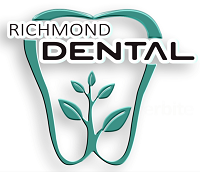If you’ve been having persistent headaches, jaw pain, or toothaches, you should get tested for TMJ problems. TMJ, or temporomandibular joints, are the connections between the skull and the lower jaw that are held together by muscle and ligaments. TMJ issues can be caused by arthritis, traumas, or dislocations, and symptoms include TMJ pain, ringing in the ears, and neck pain.
Temporomandibular joint disorder (TMJD) can be a painful and challenging condition that affects the jaw joint and muscles. From discomfort to limited jaw movement, managing TMJ/TMD treatment near you is crucial for improving one’s quality of life. In this blog, we’ll explore eight unique ways to help manage temporomandibular joint disorder.
Why does TMJ Disorder occur?
You could acquire TMJ for a multitude of reasons. The most common one is teeth clenching or grinding during sleep. As a result, your jaw muscles and joints may become painful, and your upper and lower teeth may no longer fit together properly. Clenching your teeth as a stress response can lead to TMJ tooth pain treatment; hence, the two illnesses are often connected.
While the majority of TMD symptoms resolve within a few weeks or months, some unpleasant disorders can worsen due to unhealthy habits or movements that put undue strain on the muscles in the jaw and neck.
8 Tips to relieve TMJ Pain Relief
TMJ pain can be very bothersome. Surgery is the last resort for severe TMJ pain, whereas lesser symptoms can be addressed at home or by seeing the dentist in SW Calgary. Are you wondering how to relieve TMJ pain without surgery? Here are some tips:
1. Mindful Relaxation Techniques
Stress is a common trigger for TMJ symptoms. Incorporating mindful relaxation techniques such as deep breathing, meditation, or yoga can help reduce stress levels. This not only relaxes the mind but also eases tension in the jaw muscles, promoting overall well-being.
2. Dietary Adjustments
Certain foods can aggravate TMJD symptoms. Opt for a soft diet with easy-to-chew foods, and avoid excessive chewing, especially gum. Integrate anti-inflammatory foods like fruits, vegetables, and fatty fish rich in omega-3 fatty acids, which can help alleviate inflammation and promote joint health.
3. Heat and Cold Therapy
Applying heat or cold to the affected jaw area can provide relief from TMJD symptoms. Use a warm compress to relax tense muscles and reduce pain, or apply a cold pack to numb the area and minimize inflammation. Alternating between heat and cold therapy can be especially beneficial.
4. Jaw Exercises
Gentle jaw exercises can improve flexibility and strengthen the muscles surrounding the temporomandibular joint. Your healthcare provider or physical therapist can guide you through specific exercises tailored to your condition, helping you regain control over your jaw movements.
5. Proper Posture Awareness
Maintaining good posture is essential for managing TMJD. Be conscious of your head and neck alignment, both during daily activities and while sleeping. Correcting posture habits can alleviate strain on the jaw joint and prevent the exacerbation of TMJD symptoms.
6. Customized Mouthguards
Dentists often recommend custom-made oral appliances, such as mouthguards or splints, to help manage TMJD. These devices can prevent teeth grinding, reduce jaw clenching, and provide support to the jaw joint, promoting proper alignment and minimizing discomfort.
7. Physical Therapy
Working with a physical therapist who specializes in TMJD can be highly beneficial. They can create a personalized exercise plan, offer manual therapy, and provide guidance on lifestyle adjustments to address the root causes of TMJD and alleviate its symptoms.
8. Acupuncture and Massage Therapy
Alternative therapies like acupuncture and massage can complement traditional TMJ management. Acupuncture may help reduce pain and improve joint function, while massage therapy can relax tense muscles, promote circulation, and ease discomfort.
Conclusion
Living with temporomandibular joint disorder requires a multifaceted approach to address both the physical and emotional aspects of the condition. By incorporating these eight unique strategies into your daily routine, you can take proactive steps towards managing TMJD and improving your overall quality of life. Always consult with healthcare professionals at Richmond Dental Clinic for personalized advice and treatment plans tailored to your specific needs.

